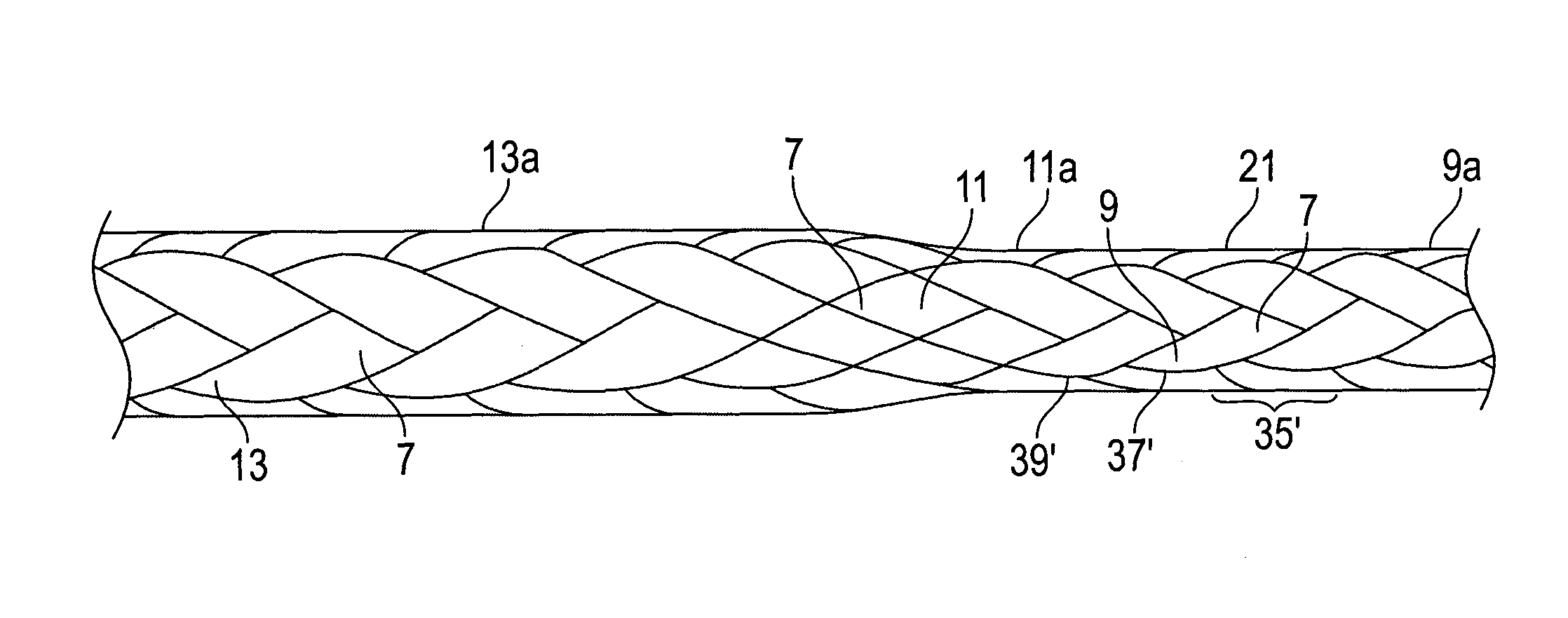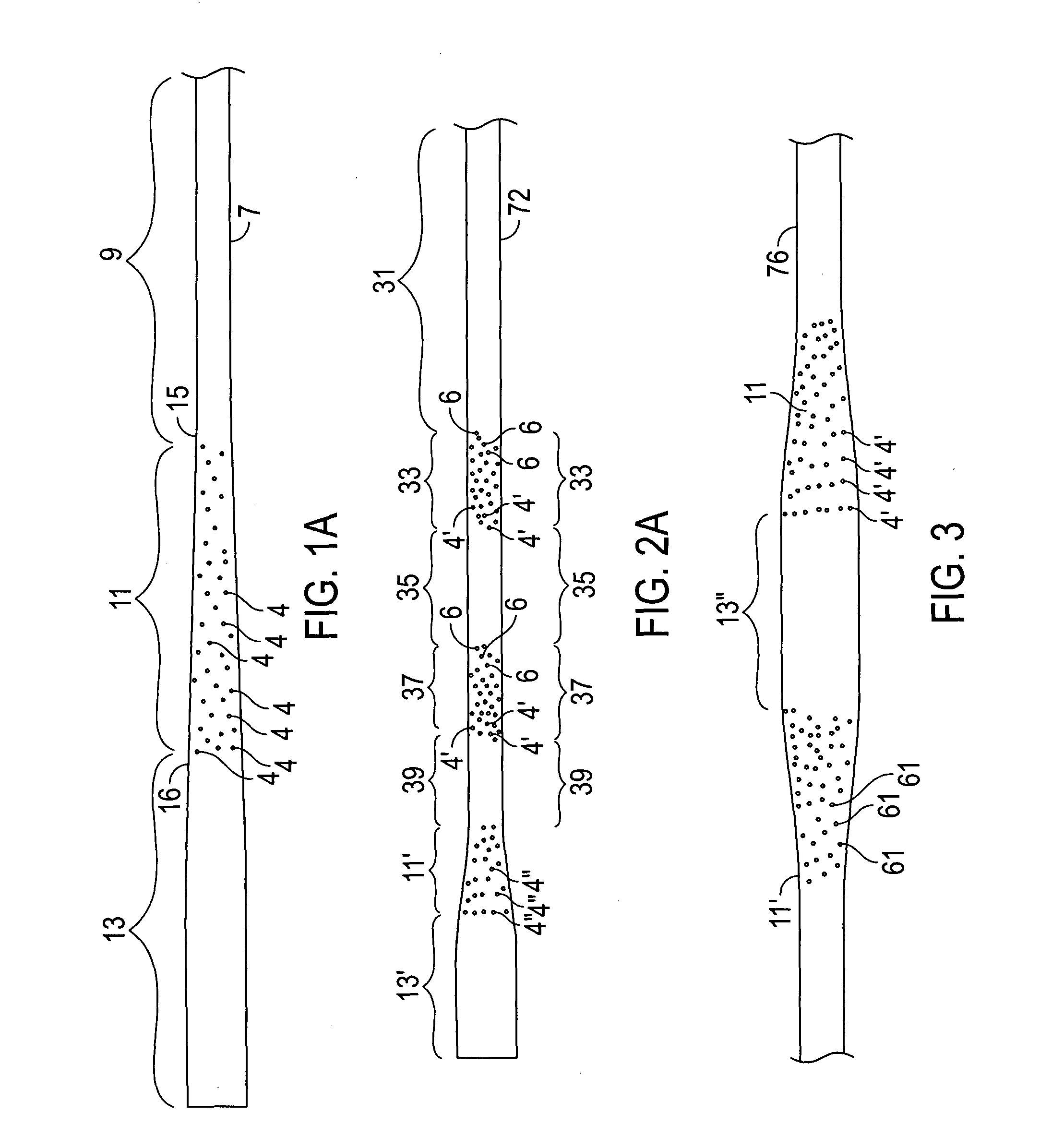Braided rope, suitable to be used as a towing warp, comprising changing properties in the length direction thereof
a technology of towing warp and rope, which is applied in the direction of braid, yarn, textiles and paper, etc., can solve the problems of reducing the so as to increase the diameter and strength of the tow warp. , the effect of increasing the diameter of the formed strand
- Summary
- Abstract
- Description
- Claims
- Application Information
AI Technical Summary
Benefits of technology
Problems solved by technology
Method used
Image
Examples
example
[0076]1) A rope for use as a towing warp, the rope formed by a process characterized by steps of:
[0077]a) introducing at least some linear elements from at least a second group of linear elements (2) into a stranding process forming at least one strand (7) from at least a first group of linear elements (1);
[0078]b) subsequently using at least some of the strands (7) formed by such stranding process to form a braided strength member (21) that varies in at least one property in at least one region situated along its long dimension, whereby the strength member (21) exhibits at least one bettered characteristic being selected from a group of characteristics including: at least bettered durability; and at least bettered longevity.
2) The rope formed by the process of example 1 wherein the process further comprises an additional step of retaining in the stranding process at least some linear elements from the first group of linear elements (1) being used in the stranding process so as to i...
PUM
 Login to View More
Login to View More Abstract
Description
Claims
Application Information
 Login to View More
Login to View More - R&D
- Intellectual Property
- Life Sciences
- Materials
- Tech Scout
- Unparalleled Data Quality
- Higher Quality Content
- 60% Fewer Hallucinations
Browse by: Latest US Patents, China's latest patents, Technical Efficacy Thesaurus, Application Domain, Technology Topic, Popular Technical Reports.
© 2025 PatSnap. All rights reserved.Legal|Privacy policy|Modern Slavery Act Transparency Statement|Sitemap|About US| Contact US: help@patsnap.com



